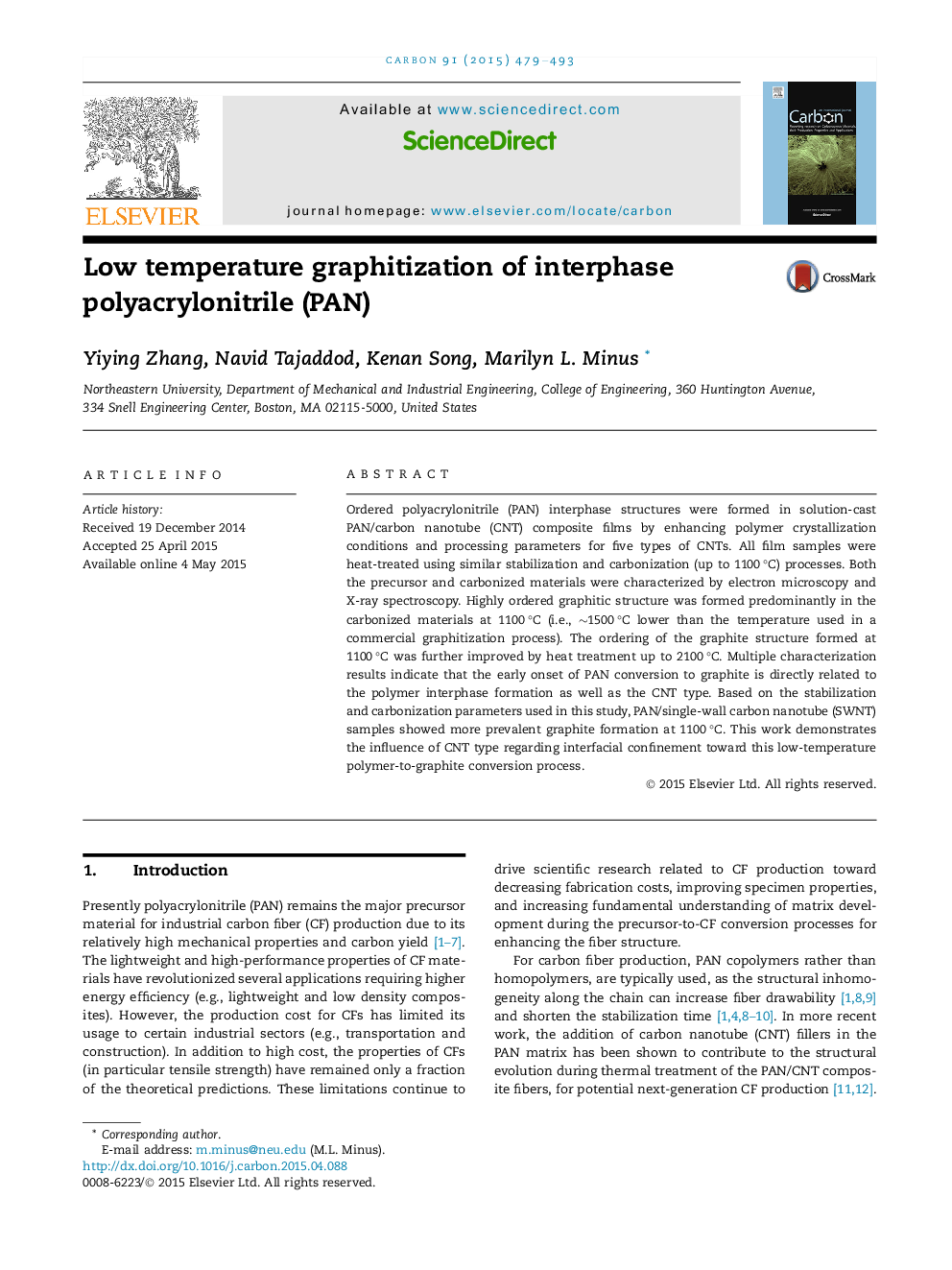| Article ID | Journal | Published Year | Pages | File Type |
|---|---|---|---|---|
| 7851793 | Carbon | 2015 | 15 Pages |
Abstract
Ordered polyacrylonitrile (PAN) interphase structures were formed in solution-cast PAN/carbon nanotube (CNT) composite films by enhancing polymer crystallization conditions and processing parameters for five types of CNTs. All film samples were heat-treated using similar stabilization and carbonization (up to 1100 °C) processes. Both the precursor and carbonized materials were characterized by electron microscopy and X-ray spectroscopy. Highly ordered graphitic structure was formed predominantly in the carbonized materials at 1100 °C (i.e., â¼1500 °C lower than the temperature used in a commercial graphitization process). The ordering of the graphite structure formed at 1100 °C was further improved by heat treatment up to 2100 °C. Multiple characterization results indicate that the early onset of PAN conversion to graphite is directly related to the polymer interphase formation as well as the CNT type. Based on the stabilization and carbonization parameters used in this study, PAN/single-wall carbon nanotube (SWNT) samples showed more prevalent graphite formation at 1100 °C. This work demonstrates the influence of CNT type regarding interfacial confinement toward this low-temperature polymer-to-graphite conversion process.
Related Topics
Physical Sciences and Engineering
Energy
Energy (General)
Authors
Yiying Zhang, Navid Tajaddod, Kenan Song, Marilyn L. Minus,
